First of two parts
I have never seen an empty space that was so moving.
Six bronze figures in military uniform, five men and one woman, stand in two rows. They hold their hands as if they are carrying something between them, and it’s easy to see what: An invisible coffin.
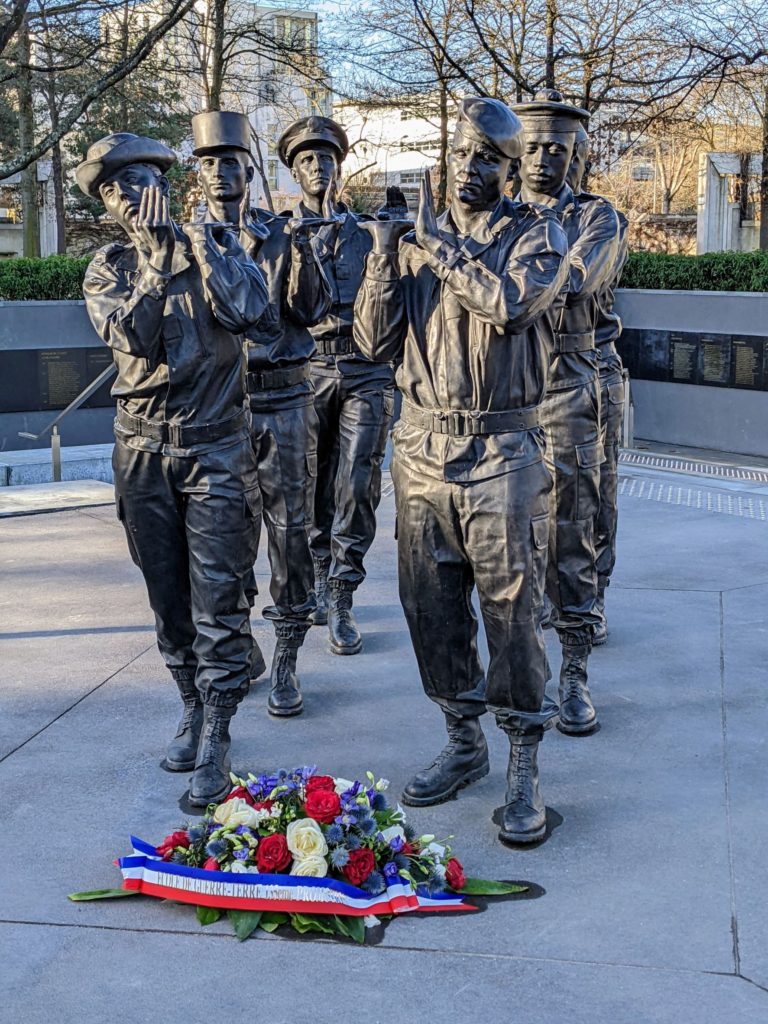
Photo: Timothy Boggs
Their faces are individually featured, but they share an expression that shows the burden they are carrying is important. Behind them, two sunken walls at 90-degree angles, reminiscent of the Vietnam Veterans Memorial in Washington, list the names of those commemorated in this quiet space. It mourns and celebrates the 550-plus servicepeople killed in what is called “Opex,” French military operations overseas in the modern era. It is in a park named for a female radio operator from Algeria who was captured and killed while parachuting into France in World War II to begin her mission.
I visited here recently with my friends Tim and James, and it got me thinking about how we respond to memorials to those killed in conflict. Paris is studded with them, probably hundreds of them, yet it is so easy to walk by, unseeing.
Which is just what I did at the first memorial I set out to visit. The roughly 95,000 Parisians who died during World War I are commemorated on the western wall of Père Lachaise cemetery, I saw on a city Web site. I couldn’t quite figure out how that worked, and I was puzzling over the question as I walked from the Metro along the rue Ménilmontant to meet my friends Caroline and Gary, who were going to see it with me.
Then I looked to my left.

The memorial WAS the wall, in a sense. Each name was on that long gray strip, by year of death. The scale was astonishing, especially considering the war that was to come two decades later. Yet so many people walked by without seeming to notice.
I had another surprise when I took the train to the suburb of Suresnes to see a memorial to the dead of World War II, including more than 1,000 Résistants killed by the Nazis during the occupation of Paris. I walked up the hill through a large park and suddenly realized I was standing in front of an American cemetery.

I had vaguely known about it already but had forgotten. I was the only visitor to this verdant, somber field, dedicated in 1939. Looking over the graves was an imposing two-wing edifice with a chapel in the middle.
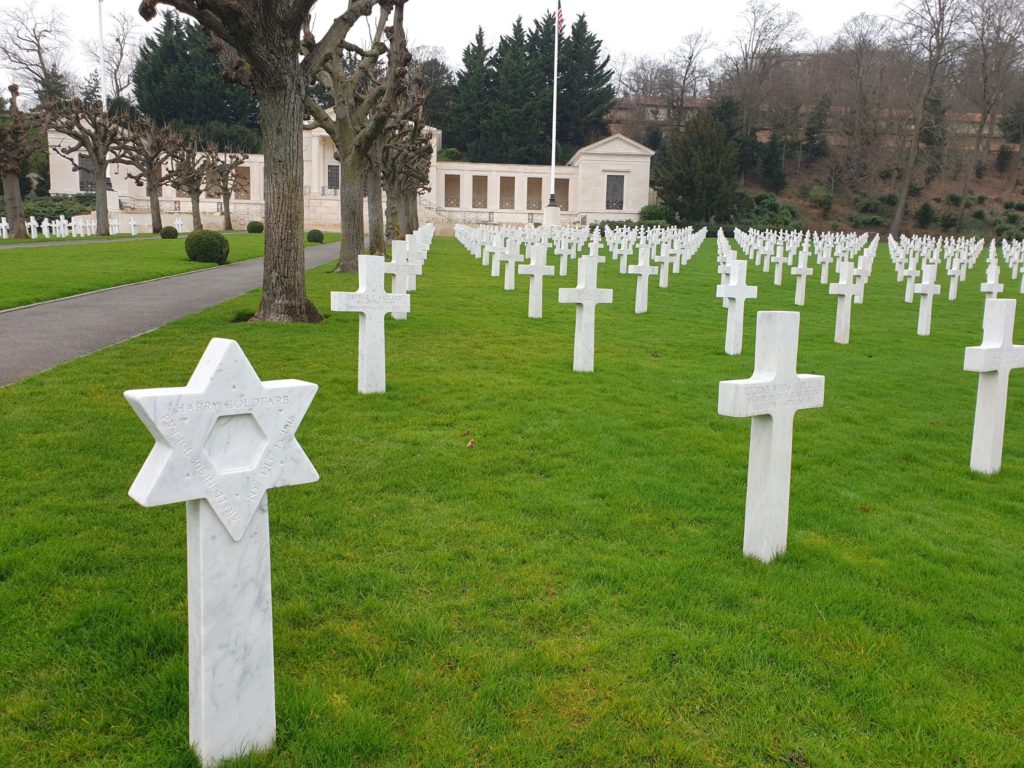
All the 1,582 graves were from the first war except for 23 unknowns who perished in World War II. The others from that war buried on French soil lie in seven cemeteries in Normandy; another seven cemeteries in France hold the remains of World War I casualties.
I had a moment of excitement there when I got trapped on the loggia of one of the wings after the huge metal door from the chapel closed firmly behind me (even though the door to the other loggia had behaved properly.)
After about 20 minutes of gazing out at the cemetery, reflecting on how they should have had an alternate exit, weighing the cost-benefit ratio of jumping six feet down and taking selfies, I saw a guard hove into view at the gate. Even after hearing my cries, he moved at half-speed.
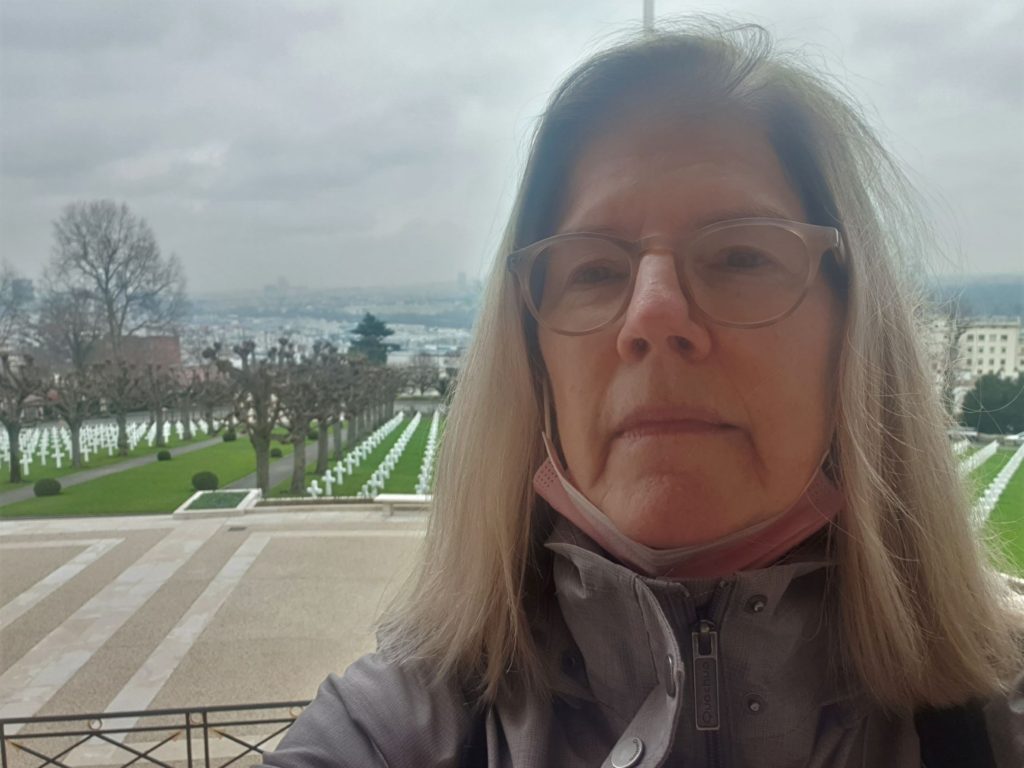

His first words when I explained that the door had closed behind me: “No, it works.” I invited him to come out on the loggia with me and try it himself and he declined.
Then I continued up the hill to the Résistant site. It had been inaugurated by Charles de Gaulle in 1960 and looked it. The architecture looked like 1960, or maybe 1950, and the Cross of Lorraine looked like, well, De Gaulle.
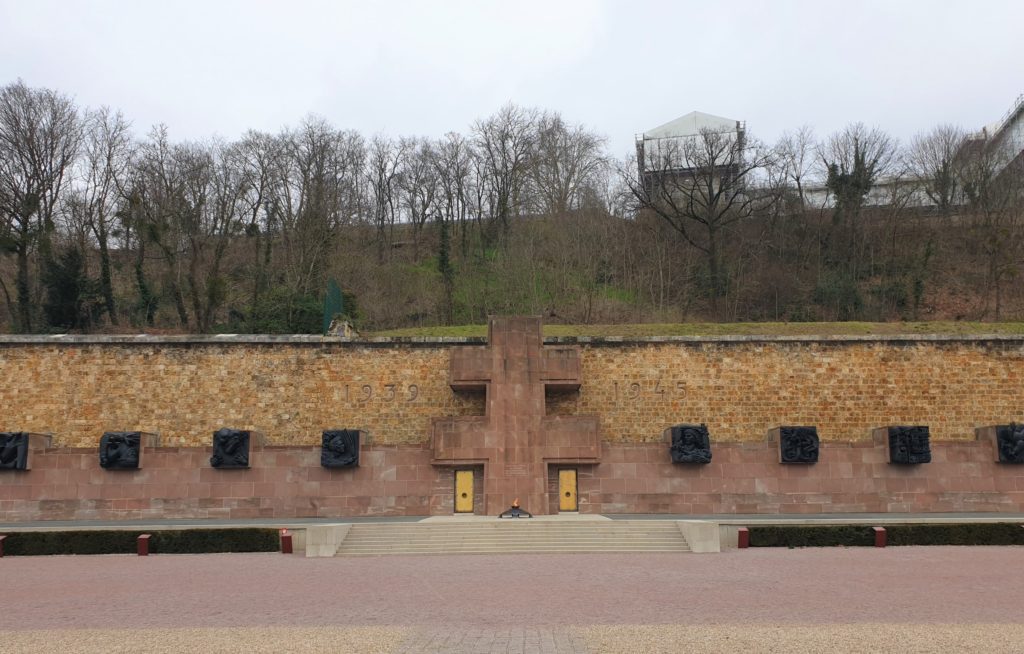
Another memorial on my list – I wasn’t scratching the surface of what was there – was to the soldiers killed during the 1954-1962 Algerian War, as well as in conflicts in Morocco and Tunisia. I was glad the web page included a reference to the harkis, the Algerian Muslim volunteers who fought for France and received little recognition afterward. But that was all I got to see, since the site itself, on the Left Bank right by the river, was undergoing renovation.
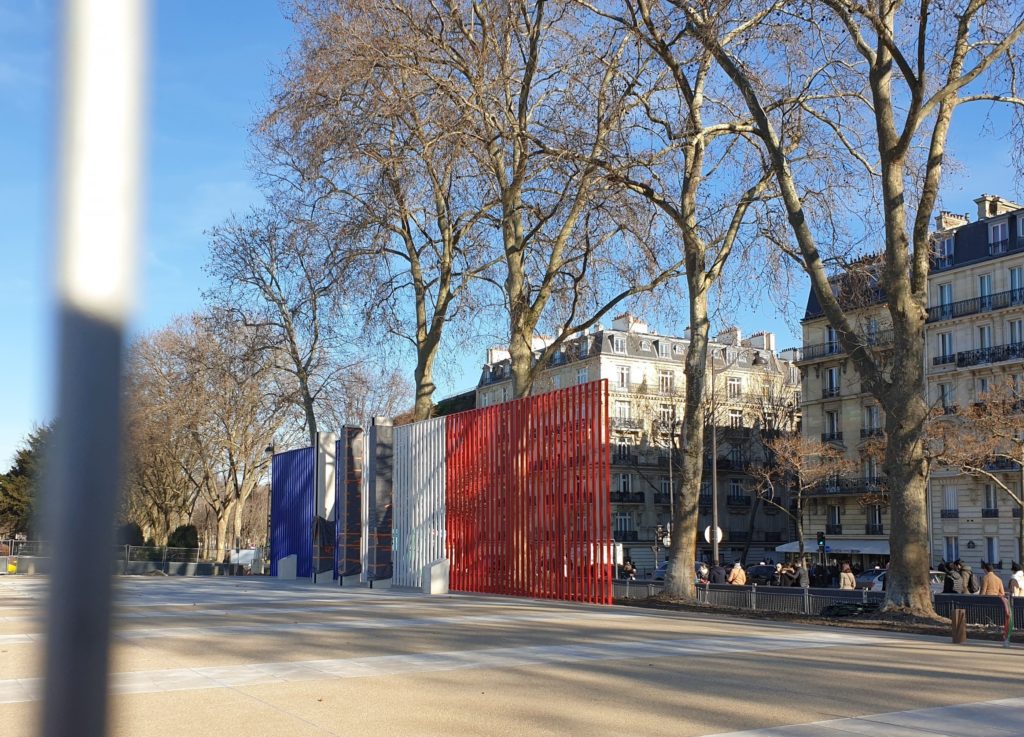
It usually looks like this.
Not far from there, just off the Place de la Concorde, was the memorial that probably gets overlooked the most. Ten plaques, mostly commemorating resistance fighters who died in combat during the August 1944 liberation of Paris, are set into the high stone wall between the rue de Rivoli and the Tuileries Gardens.
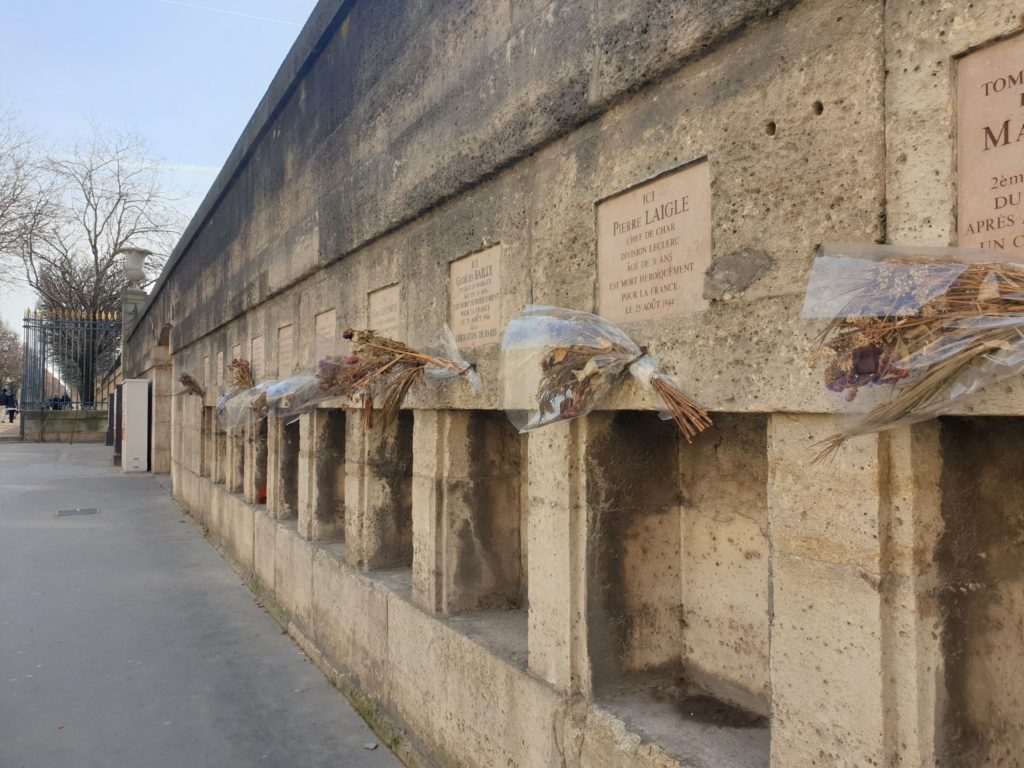
Sometimes the flowers attached there are fresh, or there are boxes of flowers in the niches under the plaques. In the warmer months, most likely.
Many of the victims were in their late teens or 20s. 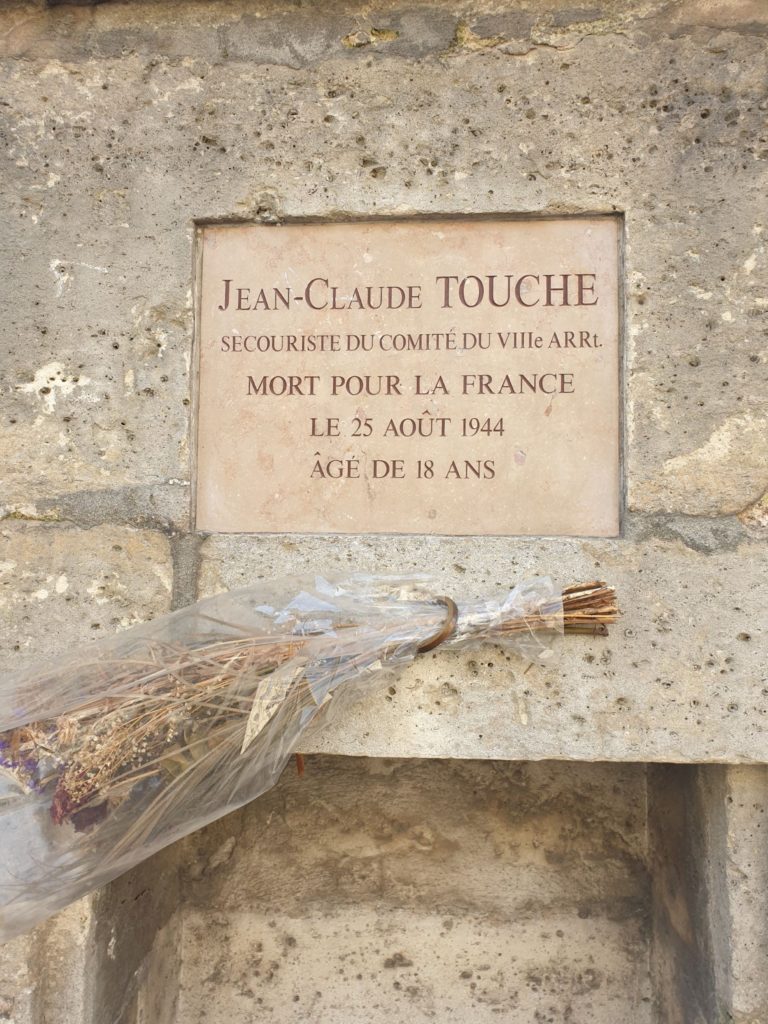

Jean-ClaudeTouche, 18, was a first responder for the résistants of the 8th arrondissement when he was gunned down. Marcel Bizien was 23 and chief of a Sherman tank unit when he destroyed a German Tiger tank and then was shot.
On this busy, touristic corner, a few people did stop and look at the plaques while passing by, but I suspect it was mostly to see what I was taking photos of.
And I can’t blame those who just keep walking, as I often do. We are so busy with the important missions in our lives, like going to work or visiting the Eiffel Tower. It’s hard to remember to look around and imagine Paris under Nazi occupation, or Parisians flocking to the Champs-Elysees to celebrate the peace treaty of Nov. 11, 1918, after years of food rationing, or American troops landing on the Normandy beaches.
But keep your eyes open. Paris can tell you all about it if you do.
Stay tuned for Part 2: The saddest war memorial in Paris

Great idea, and interesting post!
Thank you!
Wonderful post – yes we walk by so many of these without looking.
Thank you, Barbara!
I am one of the rare Parisians who regularly stopped to read those omnipresent plaques throughout our 40 year residency. Thanks for this lovely article.
Thank you James, I’m so glad you do!
Thanks, Anne, for capturing our little outing and expanding on it so beautifully. I am sharing widely!
Thank you for the idea and the photo, Tim!
Wonderful. You are so right that we get caught up in our own thoughts and don’t really take the time to look.
Thank you Katie! And yes, and not just for war memorials.
Love reading your articles. Your sister, Christine shares them on her Facebook page
My husband & I both lost uncles during WWII.
Thank you Ellen, for your kind words and for having hero uncles.
Enjoyed this post, Anne. Paris is so full of history around each corner.
Thanks so much, Ingrid!
Great piece. I’ve noticed some of the smaller plaques near Notre Dame about men killed by “the Germans.”
Thanks, Ted. Clearly you are one of those who keeps their eyes open!